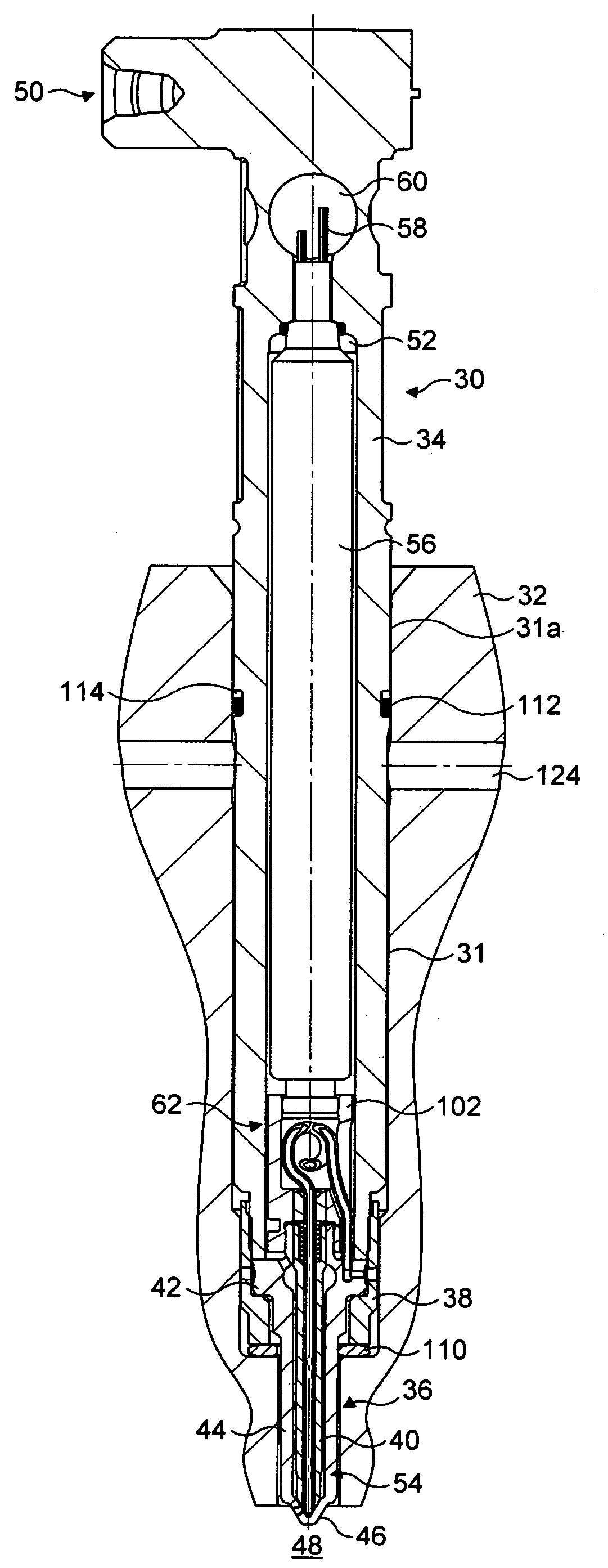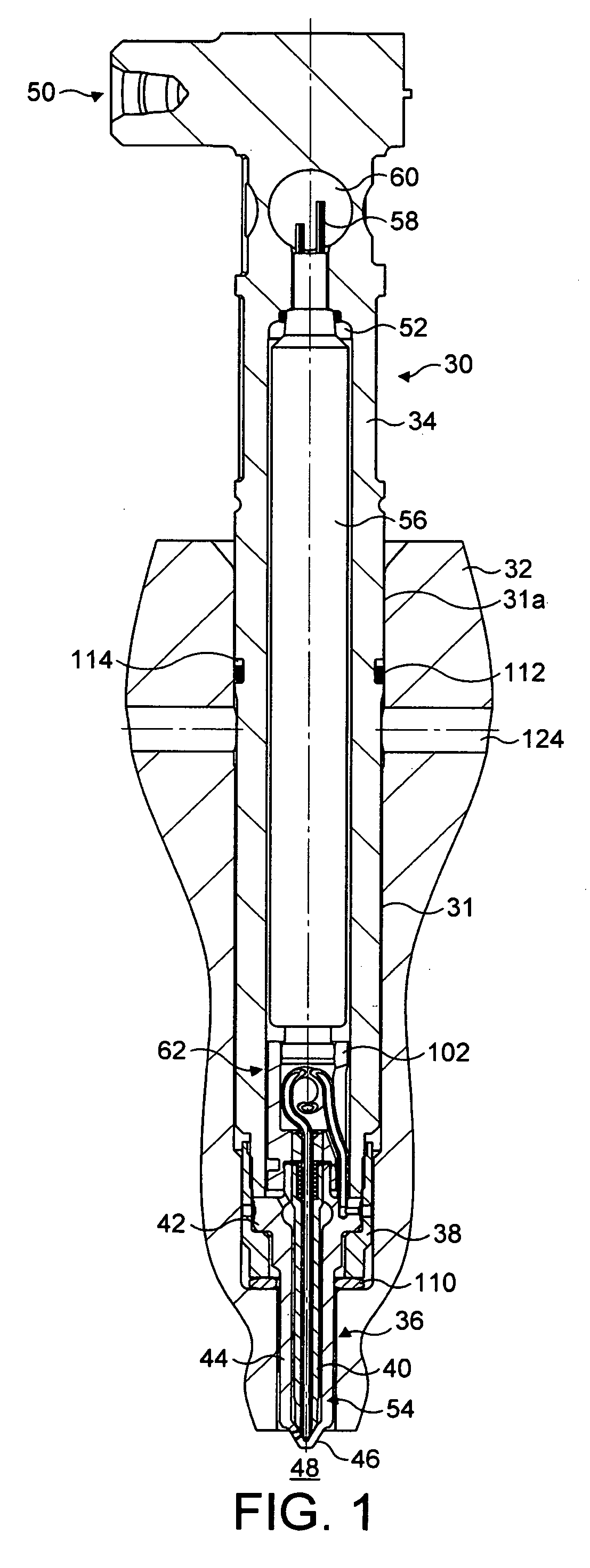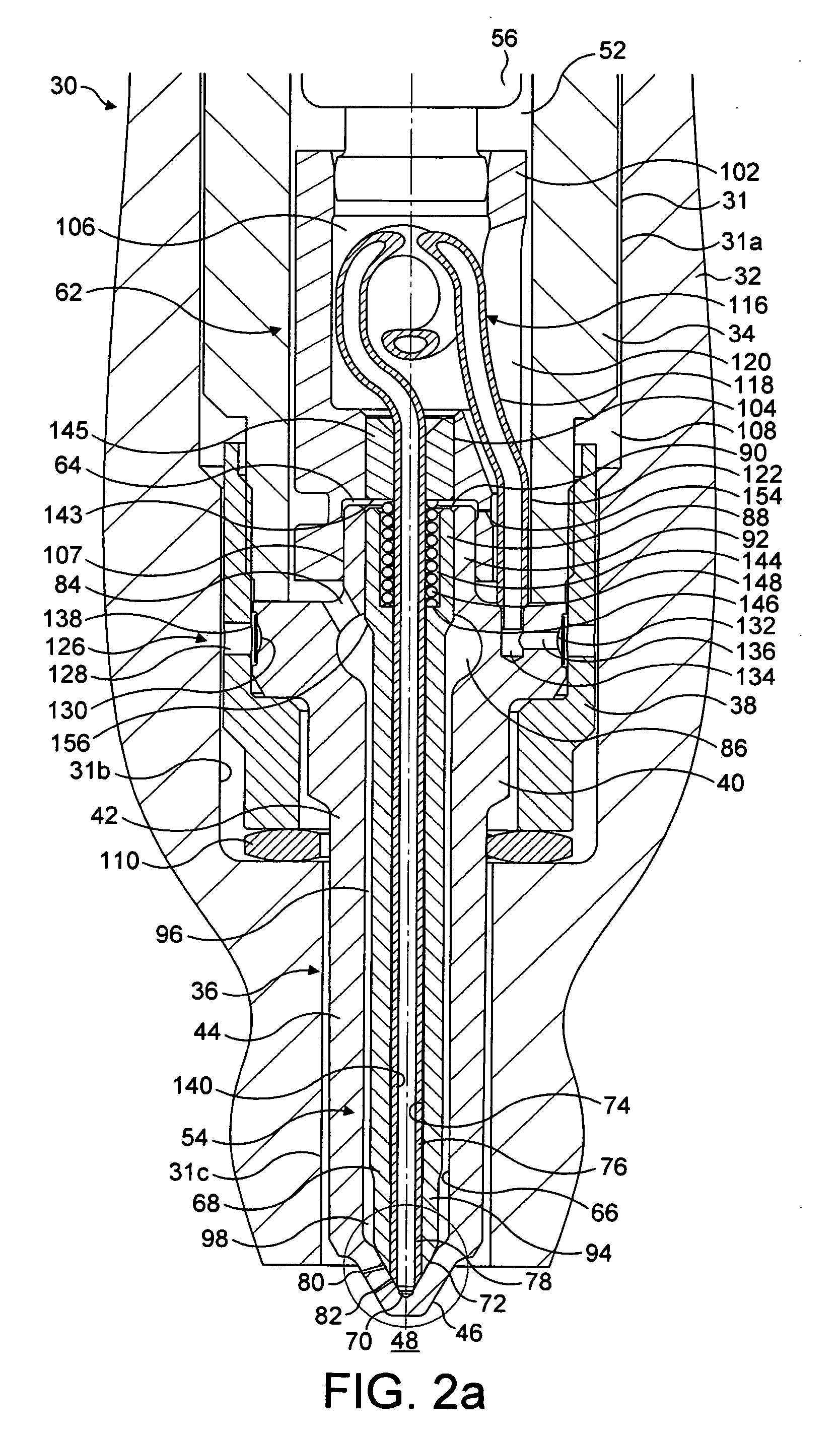Fuel injector
a fuel injector and fuel technology, applied in the direction of fuel injecting pumps, machines/engines, mechanical equipment, etc., can solve the problem of simultaneous detonation of charges in an uncontrolled manner known as pinking or knocking
- Summary
- Abstract
- Description
- Claims
- Application Information
AI Technical Summary
Benefits of technology
Problems solved by technology
Method used
Image
Examples
first embodiment
[0103]FIG. 1 shows a fuel injector 30 according to the present invention, mounted in a bore 31 extending through a cylinder head 32 of an internal combustion engine. The injector 30 includes a longitudinally-extending injector body 34 and an injector nozzle 36.
[0104]The injector nozzle 36 is secured to the injector body 34 by means of a capnut 38. The capnut 38 carries internal threads (not shown in FIG. 1) to mate with external threads (not shown) provided on the lower end of the injector body 34. The injector nozzle 36 includes an elongate nozzle body 40 comprising a collar portion 42 of relatively large outside diameter, and a longitudinal portion 44 of relatively small outside diameter.
[0105]The nozzle body 40 also includes a tip region 46 that extends beyond a lower surface of the cylinder head 32 and into a combustion chamber 48 of the cylinder. The fuel injector 30 is supplied with first and second fluids, referred to hereafter as first and second fuels, from respective first...
second embodiment
[0150]FIGS. 5a and 5b show part of a fuel injector 30a according to the invention wherein the second set of outlets in the nozzle body 40a comprises a single downwards-pointing orifice or outlet at the tip of the nozzle, known hereafter as the second outlet 82a. The second outlet is aligned axially with the nozzle body 40a. The inner valve member 76a is provided with passages 160 extending from the outer surface to the inner surface of the inner valve member 76a and arranged between the upper and lower seating lines 152a, 152b of the inner valve member 76a.
[0151]In the intermediate energization state, the inner valve member 76a is seated on the second seating region 100b as shown most clearly in FIG. 5b. Cooperation of the upper seating line 152a of the inner valve member 76a with the second seating region 100b prevents the second fuel from flowing from the second delivery chamber 142a within the bore of the inner valve member 76a toward the first set of outlets 80, particularly wh...
third embodiment
[0154]FIGS. 7a and 7b show a fuel injector 30b according to the present invention that provides an alternative communication path for the second fuel. In this embodiment, no passages for the second fuel are provided in the capnut 38b or the nozzle body 34b of the injector 30b and the second fuel need not be routed through the cylinder head (not shown in FIGS. 7a and 7b). Instead, the coiled portion 116b of the inner valve member 76b comprises a single loop, and the upstream portion 118b of the inner valve member 76b emerges from the coiled portion 116b in an upwardly direction. The coiled portion 116b is accommodated partly within the cavity 106b of the piston member 102b, and partly within an aperture 120b in the wall of the piston member 102b, so that the upstream portion 118b of the inner valve member 76b emerges upwardly from the coiled portion 116b alongside the piston member 102b and in a direction parallel to the longitudinal direction of the injector 30b.
[0155]In this embod...
PUM
 Login to View More
Login to View More Abstract
Description
Claims
Application Information
 Login to View More
Login to View More - R&D
- Intellectual Property
- Life Sciences
- Materials
- Tech Scout
- Unparalleled Data Quality
- Higher Quality Content
- 60% Fewer Hallucinations
Browse by: Latest US Patents, China's latest patents, Technical Efficacy Thesaurus, Application Domain, Technology Topic, Popular Technical Reports.
© 2025 PatSnap. All rights reserved.Legal|Privacy policy|Modern Slavery Act Transparency Statement|Sitemap|About US| Contact US: help@patsnap.com



